215 episodes


Home-built aircraft are dangerous. Special guest Miles O'Brien joins Todd Curtis and John Goglia to discuss an August 2023 crash of a Kit Fox Model 3 aircraft that seriously injured the pilot. The FAA's approach to home-built aircraft allows owners to build their aircraft with little or no direct oversight. The accident rate is more than two times higher than general aviation aircraft. The pilot did not have a current FAA medical certification or a current endorsement to operate an aircraft as a single pilot. According to the maintenance documentation, in the eight years prior to the accident, the pilot had fewer than three hours of flight time. Home-built aircraft have advantages such as lower cost of ownership. Kit built aircraft have grown in popularity as more manufacturers enter the market. There are even high schools that build kit aircraft for resale as part of their educational programs. The safety risks are high. Kit aircraft are certified as experimental aircraft by the FAA. Some have modifications that would not be allowed on other kinds of general aviation aircraft. Little more than a driver’s license is needed to pilot one of these aircraft. Related documents are available at the Flight Safety Detectives website. Don’t miss what’s to come from the Flight Safety Detectives - subscribe to the Flight Safety Detectives YouTube channel https://www.youtube.com/c/FlightSafetyDetectives, listen at your favorite podcast service and visit the Flight Safety Detectives website https://flightsafetydetectives.com.


An experienced flight instructor and student were killed when stall and spin practice in a Cessna 172 went horribly wrong. Flight data recorded by the aircraft and other evidence shows that the aircraft entered a very steep spiral turn nearly 6,000 above the ground and did not recover. “They set themselves up for the right conditions. This accident just doesn’t make sense,” John Goglia says. Todd Curtis and John dig into the November 11, 2021 fatal plane crash. The flight instructor had nearly 15,000 hours of experience in the Cessna 172 and the student pilot had nearly 370 hours in the same make and model. No mechanical fault was found with the plane involved. Based on information in the student's logbook and the Cessna 172 operating handbook, the student pilot and instructor may have been performing a maneuver associated with obtaining a commercial pilot certificate. Todd, who is also considering the same certification, discusses the requirement that the pilot be familiar with spiral turns. Students pursuing a private pilot certificate are not required to perform a spin maneuver, but it is still often part of flight instruction. They advise aspiring pilots to decline optional maneuvers that they think are too risky. Related documents are available at the Flight Safety Detectives website. Don’t miss what’s to come from the Flight Safety Detectives - subscribe to the Flight Safety Detectives YouTube channel https://www.youtube.com/c/FlightSafetyDetectives, listen at your favorite podcast service and visit the Flight Safety Detectives website https://flightsafetydetectives.com.
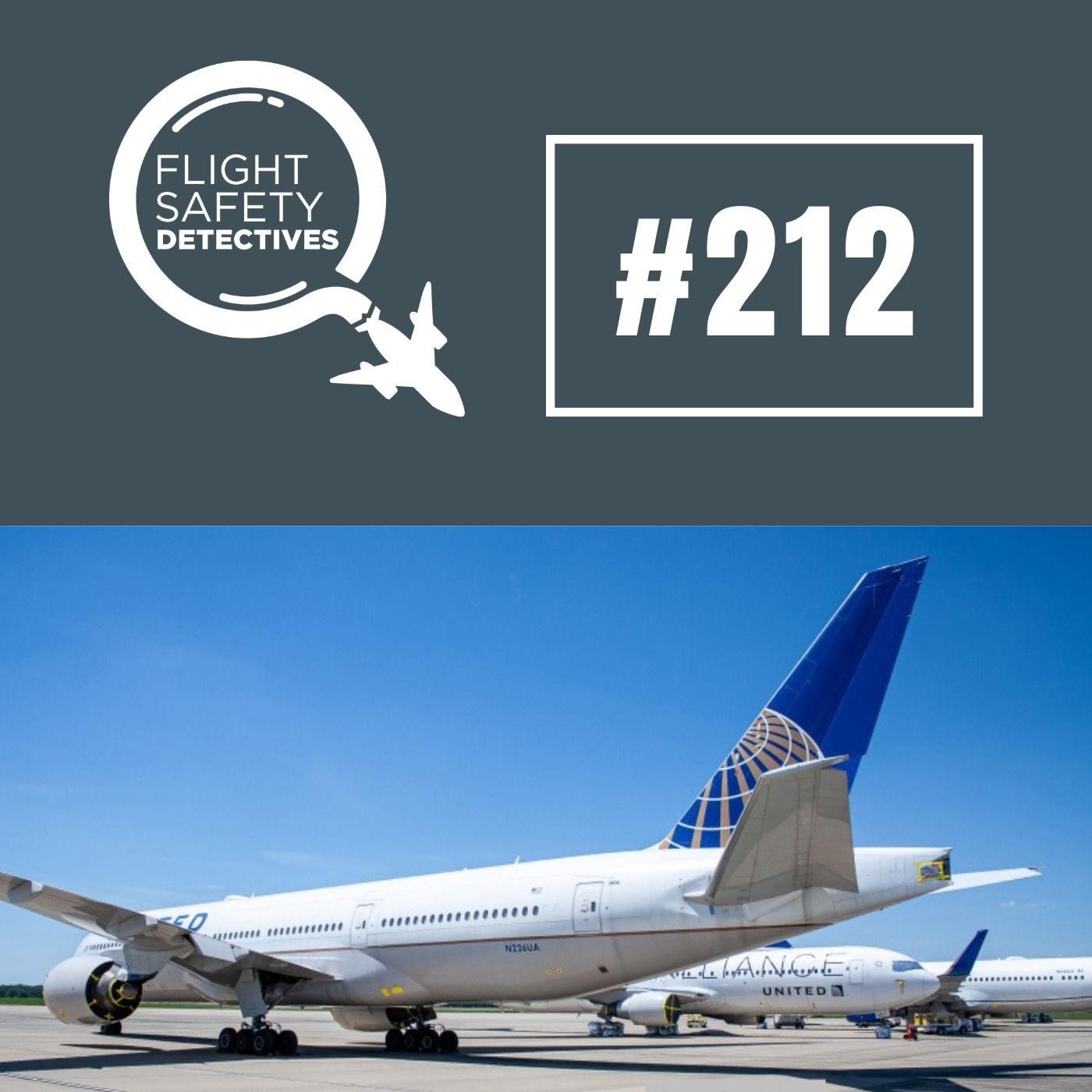

More than 50 people were injured on March 11 when a Boeing 787 flying from Australia to New Zealand experienced a precipitous drop. John Goglia shares inside information that indicates one of the pilot seats was accidentally moved forward, jamming the pilot up against the control column and causing the sudden drop. Special guest Miles O'Brien joins Todd Curtis and John Goglia to discuss this and another aviation incident from early March 2024. The second incident occurred on March 7, when a planespotter recorded a video of a wheel falling off of a 777 shortly after takeoff from San Francisco. The location of the cockpit seat switch in the 787 airplane is examined in detail. John shares first-hand experiences that demonstrate why the information about the March 11 flight is plausible. The event investigation by the Chilean authorities is expected to provide full details. Todd shares his experiences as a Boeing engineer working on the 777 development program. He and his colleagues identified design changes to deal with potential safety issues, but most of those changes never happened. John shares his experiences with wheel separation events. He has an informed opinion on how the recent 777 wheel separation event may have happened. The NTSB needs to get to the root cause and provide the public with detailed information about what happened. The media, including social media, plays a significant role in bringing attention to aviation safety events that were often ignored in the past. Are there more aviation safety issues than in years past? John points out issues such as experienced professionals leaving aviation. Todd looks at the impact of increased availability of aviation data. Don’t miss what’s to come from the Flight Safety Detectives - subscribe to the Flight Safety Detectives YouTube channel https://www.youtube.com/c/FlightSafetyDetectives, listen at your favorite podcast service and visit the Flight Safety Detectives website https://flightsafetydetectives.com.


Todd Curtis, Greg Feith, and John Goglia discuss the crash of a Joby JAS4 eVTOL aircraft to highlight safety concerns and regulatory challenges. Propulsion units used in eVTOLs pose significant safety risks. The eVTOL in this crash was being remotely flown during a test flight. The aircraft is powered by six electric motors and is designed to take off and land vertically like a helicopter and cruise like an airplane. John, Greg, and Todd examine how the design of the aircraft, with a unique configuration of six propulsion units, creates several failure modes that don't exist for currently certified passenger-carrying aircraft. While no one was injured or killed in this crash, Greg, Todd, and John explore risks evident in the accident. They call on the FAA to consider these risks during the certification process. Several eVTOL manufacturers, as well as some manufactures of large jet transports, are designing their aircraft for either single pilot or autonomous operation. These designs make it difficult to respond to unforeseen emergencies. Greg and John note the crew responses to several past aviation accidents and how a single pilot or an autonomous system may not be able to deal with those situations. Related documents are at the Flight Safety Detectives website. Don’t miss what’s to come from the Flight Safety Detectives - subscribe to the Flight Safety Detectives YouTube channel https://www.youtube.com/c/FlightSafetyDetectives, listen at your favorite podcast service and visit the Flight Safety Detectives website https://flightsafetydetectives.com.


Todd Curtis and John Goglia discuss the February 9, 2024 crash of a Challenger 604 jet on I75 in Florida. The plane landed on the road, but then crashed into a wall, killing the pilot and copilot. John and Todd discuss why a better outcome was possible. The jet, which had three crew members and two passengers, was nearing the end of a flight from Columbus, Ohio, when the flight crew declared an emergency to air traffic control. They lost their engines and could not make it to the airport. Little official information was available at the time of the recording. It was not known whether the aircraft was equipped with a cockpit voice recorder or flight data recorder. The engines appear to be intact, which will help with the investigation. John and Todd compare this accident to a 1997 Southern Airways DC9 crash in New Hope, Georgia. In that accident the crew was able to land on a road, and the aircraft caught fire after running into obstructions near the road. In both accidents there were survivors among the cabin crew and passengers. Todd and John encourage pilots to assess their options for making an emergency landing so they are prepared to take action if an emergency occurs. Don’t miss what’s to come from the Flight Safety Detectives - subscribe to the Flight Safety Detectives YouTube channel https://www.youtube.com/c/FlightSafetyDetectives, listen at your favorite podcast service and visit the Flight Safety Detectives website https://flightsafetydetectives.com.


The helicopter crash that killed the CEO of a major Nigerian bank and his family appears to be the result of similar pilot errors that caused the Kobe Bryant crash and other high-profile accidents. Greg Feith and John Goglia cite several recent accidents that show that poor decisions among pilots who fly for Part 135 operators may be the common contributing factor. The Flight Safety Detectives explore the known facts surrounding the fatal flight. The forecast called for wintry mix along the flight path and witnesses reported precipitation at the time of the accident. The helicopter may not have been equipped for the conditions. The pilots were following roads, which can cause disorientation issues during night flying. Greg calls for a new look at regulations that allow Part 135 operators of smaller helicopters to fly without either a cockpit voice recorder or a flight data recorder. The lack of recorders limits information available to accident investigators. John and Greg discuss their experiences consulting for companies and high net worth individuals who use executive air transportation services. They have found an overall lack of due diligence to ensure the safety of these operations. Related documents are available at the Flight safety Detectives website. Don’t miss what’s to come from the Flight Safety Detectives - subscribe to the Flight Safety Detectives YouTube channel https://www.youtube.com/c/FlightSafetyDetectives, listen at your favorite podcast service and visit the Flight Safety Detectives website https://flightsafetydetectives.com.
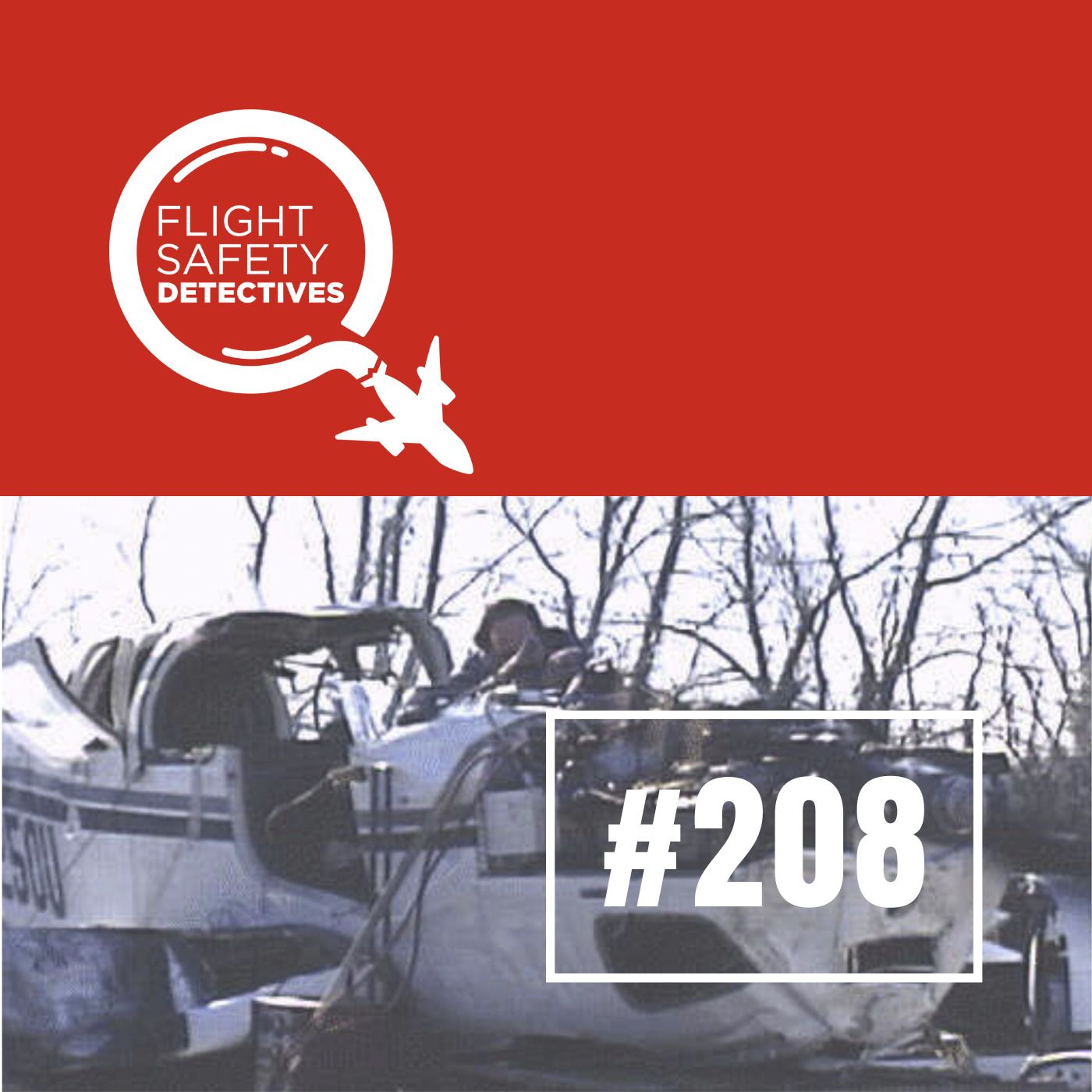

Most general aviation pilots hesitate to declare an inflight emergency fearing negative consequences. Greg Feith, John Goglia and Todd Curtis use a Beechcraft Bonanza plane crash to illustrate how declaring an emergency can be the safest move. The fatal Beechcraft Bonanza accident in the spotlight of this episode is featured in the book, "Single-Pilot IFR Pro Tips" written by 2019 National CFI of the Year Gary "GPS" Reeves. Known as The Guy in the Pink Shirt, Reeves uses examples from several incidents to illustrate good general aviation pilot habits. Reeves uses the Beechcaft Bonanza event to highlight the advantages of not waiting to declare an emergency. The Flight Safety Detectives find that this crash is also a classic example of how oversights and bad habits by the pilot in command can lead to an avoidable accident. They offer life-saving insights into this aviation disaster. The NTSB found that the cause was an improperly positioned fuel selector lever. Greg shares his own experience dealing with an improperly positioned lever. John recounts accidents involving fuel selector levers, including the crash that killed John Denver. Amazingly, John’s experience is that many general aviation pilots have problems with the fuel sector due to not using them at all and never getting a feel for how they operate. “It’s not like jumping in the car to go to the grocery store,” John says. “Flying is not that simple. You need to do a thorough preflght, every time.” If the accident pilot had followed Gary Reeves advice to declare an emergency when problems first develop, the pilot would have been able to land safely at an airport. The FAA would have looked at the scenario as prudent decision making and would likely not have taken any action against the pilot. Don’t miss what’s to come from the Flight Safety Detectives - subscribe to the Flight Safety Detectives YouTube channel https://www.youtube.com/c/FlightSafetyDetectives, listen at your favorite podcast service and visit the Flight Safety Detectives website https://flightsafetydetectives.com.


Singer Jenni Rivera’s tragic plane crash was a tragic accident and not the result of a conspiracy. This special episode of the Flight Safety Detectives features the January 24 interview Todd Curtis gave on the KIQI radio show “Hecho en California,” about the 2012 crash that killed Jenni Rivera. Todd shares with hosts Isabel and Marcos Gutierrez the conclusions shared by the Flight Safety Detectives team after they analyzed the formal accident report that was released by the Mexican government. Todd, Marcos, and Isabel discuss several conspiracy theories about the death of Jenni Rivera, and how the facts of the accident report don't support those theories. They also cover the Alaska Airlines 737 MAX 9 plug door loss, an event that happened a few weeks prior to the interview. Related documents are available at the Flight Safety Detectives website. Don’t miss what’s to come from the Flight Safety Detectives - subscribe to the Flight Safety Detectives YouTube channel https://www.youtube.com/c/FlightSafetyDetectives, listen at your favorite podcast service and visit the Flight Safety Detectives website https://flightsafetydetectives.com.


The pilot of a Beech Bonanza F33A made an off-field landing when the engine lost power shortly after takeoff. John Goglia, Greg Feith and Todd Curtis dig into the information gathered by the NTSB and find this crash was caused by poor decisions made by the pilot. Greg, Todd, and John analyze the information from the Public Docket of the crash investigation. They find that the pilot's lack of understanding about the aircraft and its systems contributed a series of decisions that led to the plane crash. The pilot took off with the fuel pump on to deal with an overheating problem in two of the six cylinders of the engine. He did this despite a placard advising that the aux pump should not be on during takeoff. In the Continental IO-520 engine in this plane, as in many piston engines, airflow cools the cylinders. Common and overlooked, baffles are critical for proper engine cooling. John details his experiences seeing damaged, cracked and improperly installed baffles on engines. Greg contrasts the good decision the pilot made top not attempt a return the airport with the bad decisions he regularly encounters when pilots make the hazardous and often fatal decision to make an impossible turn back to the runway. Related documents are available at the Flight Safety Detectives website. Don’t miss what’s to come from the Flight Safety Detectives - subscribe to the Flight Safety Detectives YouTube channel https://www.youtube.com/c/FlightSafetyDetectives, listen at your favorite podcast service and visit the Flight Safety Detectives website https://flightsafetydetectives.com.


The events that led up to the crash of a MD82 in Detroit are used to illustrate the critical role of operational discipline. Greg, Todd and John give insight into the issues that led to Northwest Airlines Flight 255 crashing and disintegrating. This is just one example of bad decisions taking an airplane out of the sky. This aviation disaster killed two people on the ground and nearly everyone on board. The sole survivor was a four-year-old girl who was seriously injured. Hear the experts dissect the chain of events that led to the crash, including multiple distractions and delays and the crew neglecting to complete the taxi checklist. The report from the accident does not discuss crew resource management (CRM) practices of the accident flight crew. John discusses how CRM practices were adopted in the 1980s to reduce aviation safety risks by having flight crews become more consistent in managing aircraft operations. Greg and John showcase other noteworthy accident investigations that are examples of behaviors that had to be changed in the cockpit and how not following basic CRM practices leads to accidents. Checklist discipline is important in all types of aviation operations, including general aviation. Complex flight management systems that are now common even in single engine general aviation aircraft. Hear also what passengers can do to improve their safety in flight. Related documents are available at the Flight Safety Detectives website. Don’t miss what’s to come from the Flight Safety Detectives - subscribe to the Flight Safety Detectives YouTube channel https://www.youtube.com/c/FlightSafetyDetectives, listen at your favorite podcast service and visit the Flight Safety Detectives website https://flightsafetydetectives.com.


Jenni Rivera was a huge celebrity at the time of her death. Was the plane crash that killed her an accident or do the conspiracy theories point to the real cause? In a continuation of the examination of this aviation incident that started in Episode 203, Greg Feith joins John Goglia and Todd Curtis to discuss why the conspiracy theories related to the crash are unlikely to be true. They use the evidence uncovered during the official investigation combined with their knowledge of the accident aircraft to get to the facts. John, Greg, and Todd compare the Jenni Rivera accident to other accidents that have widely believed conspiracy theories. TWA flight 800 and Malaysia Airlines flight MH17 are two examples. They cover other plane crashes involving celebrities, including the crash that killed Ricky Nelson. Maintenance and operational issues were a factor in the Jenni Rivera crash. The same is true for other high-profile aviation disasters including the crash that killed singer Aaliyah. These events have common contributing factors including the involvement of less than reputable charter organizations and issues around bogus aircraft parts. Some charter flight operators ignore or violate aviation safety regulations and practices. Proposed safety improvements like better data recorders have been opposed by aircraft operators and manufacturers. Related documents are available at the Flight Safety Detectives website. Don’t miss what’s to come from the Flight Safety Detectives - subscribe to the Flight Safety Detectives YouTube channel https://www.youtube.com/c/FlightSafetyDetectives, listen at your favorite podcast service and visit the Flight Safety Detectives website https://flightsafetydetectives.com.


Todd and John analyze the plane crash that killed singer Jenni Rivera. The report from the Mexican accident investigation found that the Learjet 25 aircraft lost control during climb for reasons that could not be determined. Key items are missing from the report that concluded that the crash was a loss of control event: __ __ The In the wake of Rivera's death, there have been ongoing rumors that this event was not an accident, a belief that has been supported by a number of television productions. Todd and John examine the facts, data, and analyses contained in the official report. John adds insight into the lax aviation maintenance and compliance common in Mexico. The wreckage shows no evidence of an explosion or other deliberate action. The level of oversight that the US and Mexican governments typically have over aircraft that are registered in the US and operate in Mexico adds complexity to understanding exactly what happened. The Detectives plan a future episode that will focus on the conspiracy theories involving Jenni Rivera's death. They will look at how much, or how little, the facts of the investigation support those theories. Related documents can be found at the Flight Safety Detectives website. Don’t miss what’s to come from the Flight Safety Detectives - subscribe to the Flight Safety Detectives YouTube channel https://www.youtube.com/c/FlightSafetyDetectives, listen at your favorite podcast service and visit the Flight Safety Detectives website https://flightsafetydetectives.com.


Latest on the Alaska Airlines Alaska Airlines Flight 1282 737 MAX 9 aircraft plug door separation and rapid decompression. Todd, Greg, and John discuss recent developments, including the recovery of the plug door. They talk about the value of having the plug door for inspection. They share the sequence of events that led to the door separation based on factual evidence. The spotlight is now turning to Boeing. Will the company’s future actions keep the CEO’s promise that Boeing will be transparent about what happened? Hear their insider take on the challenges Boeing may face when it comes to earning confidence that company will correct problems with the 737 MAX. The approach that Boeing has taken in the past may not be adequate to address the quality issues of the 737 MAX. Don’t miss what’s to come from the Flight Safety Detectives - subscribe to the Flight Safety Detectives YouTube channel https://www.youtube.com/c/FlightSafetyDetectives, listen at your favorite podcast service and visit the Flight Safety Detectives website https://flightsafetydetectives.com.


Runway images show that the Coast Guard Dash 8 involved in the collision with Japan Airlines Flight 516 was in the wrong place. The crew was to hold on the taxiway, but were actually on the runway. The plane standing still on the center line would have been virtually invisible to the pilots of the JAL Airbus A350. The scenario is similar to a runway collision involving US Air Flight 1493 that John investigated as an NTSB Board member. That investigation made midfield takeoffs illegal in the United States. John, Greg and Todd walk through the known details and the human factors that led to the plane crash. __ __ Human errors and communication issues contributed to the crash. The episode also covers the role of aviation technology, including the heads-up display in the A350, surface radar/ASDI, and traffic collision avoidance systems (TCAS). This is a follow up to Episode 198, Expert Insights into the Japan Airlines A350 Aviation Disaster https://flightsafetydetectives.com/expert-insights-into-the-japan-airlines-a350-aviation-disaster-episode-198/, where noted airport rescue and firefighting expert Jack Kreckie discussed the firefighting response. Related documents are available at the Flight Safety Detectives website https://flightsafetydetectives.com. Don’t miss what’s to come from the Flight Safety Detectives - subscribe to the Flight Safety Detectives YouTube channel https://www.youtube.com/c/FlightSafetyDetectives, listen at your favorite podcast service and visit the Flight Safety Detectives website https://flightsafetydetectives.com.


United Airlines has reported loose bolts on five of their 737 MAX 9 aircraft plug doors. This is the latest in the unfolding look at what happened in the incident involving Alaska Airlines Flight 1282. John and Greg use insights from their decades of experience inside NTSB and other aviation safety incident investigations to explain the latest developments. They cover the information that has been released so far and what is to come. John goes through the steps that aircraft mechanics would have used to address earlier reports of pressurization warnings on this specific aircraft. Mechanics likely would have checked the pressurization system and focused on the hardware. “It wasn’t quite there yet” to escalate to pressurizing the plane to check for leaks. John and Greg return to earlier discussions of the status of quality inspections at Boeing. The internal safety review that has been reported isn’t the right step to fix safety and quality issues. This latest black eye makes it clear that is time to address manufacturing process issues and “get some good planes out the door.” Don’t miss what’s to come from the Flight Safety Detectives - subscribe to the Flight Safety Detectives YouTube channel https://www.youtube.com/c/FlightSafetyDetectives, listen at your favorite podcast service and visit the Flight Safety Detectives website https://flightsafetydetectives.com.
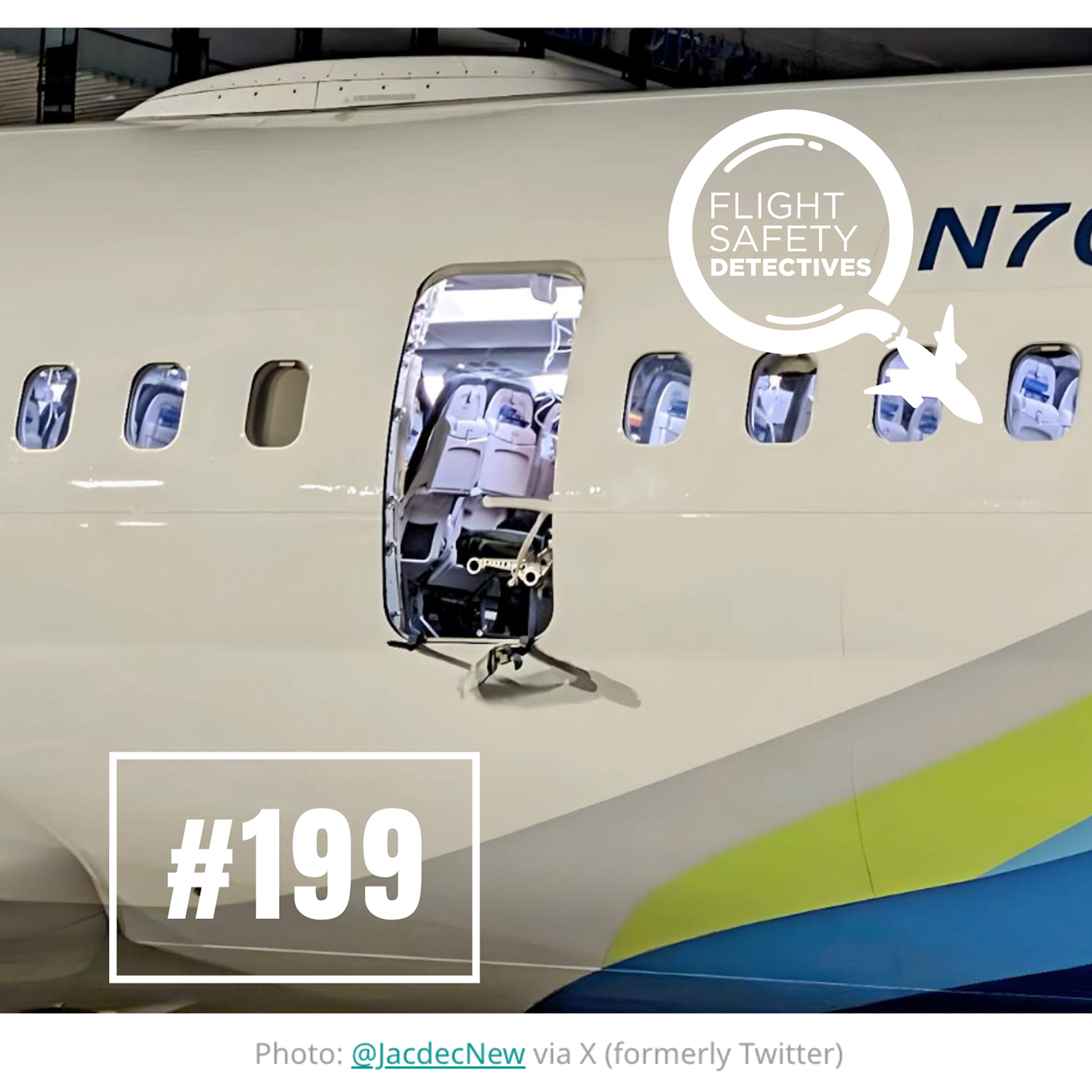

What happened to Alaska Airlines Flight 1282? What is going on at Boeing? In this special episode, Greg and John provide expert insight into the rapid decompression and inflight separation of an exit door panel on a Boeing 737-9 Max airplane. The Flight Safety Detectives dissect issues surrounding this incident and the regulatory response that is already happening. They discuss similar incidents, including United Airlines Flight 811 747 near Honolulu where a Boeing 747-122 lost a cargo door. John and Greg share details that aren’t being discussed in media coverage. They explain the mandatory AD that has been issued by the FAA. All US-registered 737 MAX 9 aircraft with this type of exit door must be grounded and inspected. The Max fuselage is made by Spirit and provided to Boeing. All the steps in the manufacturing process will be scrutinized as the NTSB investigation proceeds. This is the latest high profile aviation safety issue involving the 737 MAX. John talks about the inadequate number of quality inspectors and quality safeguards in the Boeing manufacturing process as a potential shortcoming that has led to the issues with the Max. Greg points to some fundamental organizational issues that need to be addressed. Don’t miss what’s to come from the Flight Safety Detectives - subscribe to the Flight Safety Detectives YouTube channel https://www.youtube.com/c/FlightSafetyDetectives, listen at your favorite podcast service and visit the Flight Safety Detectives website https://flightsafetydetectives.com/.
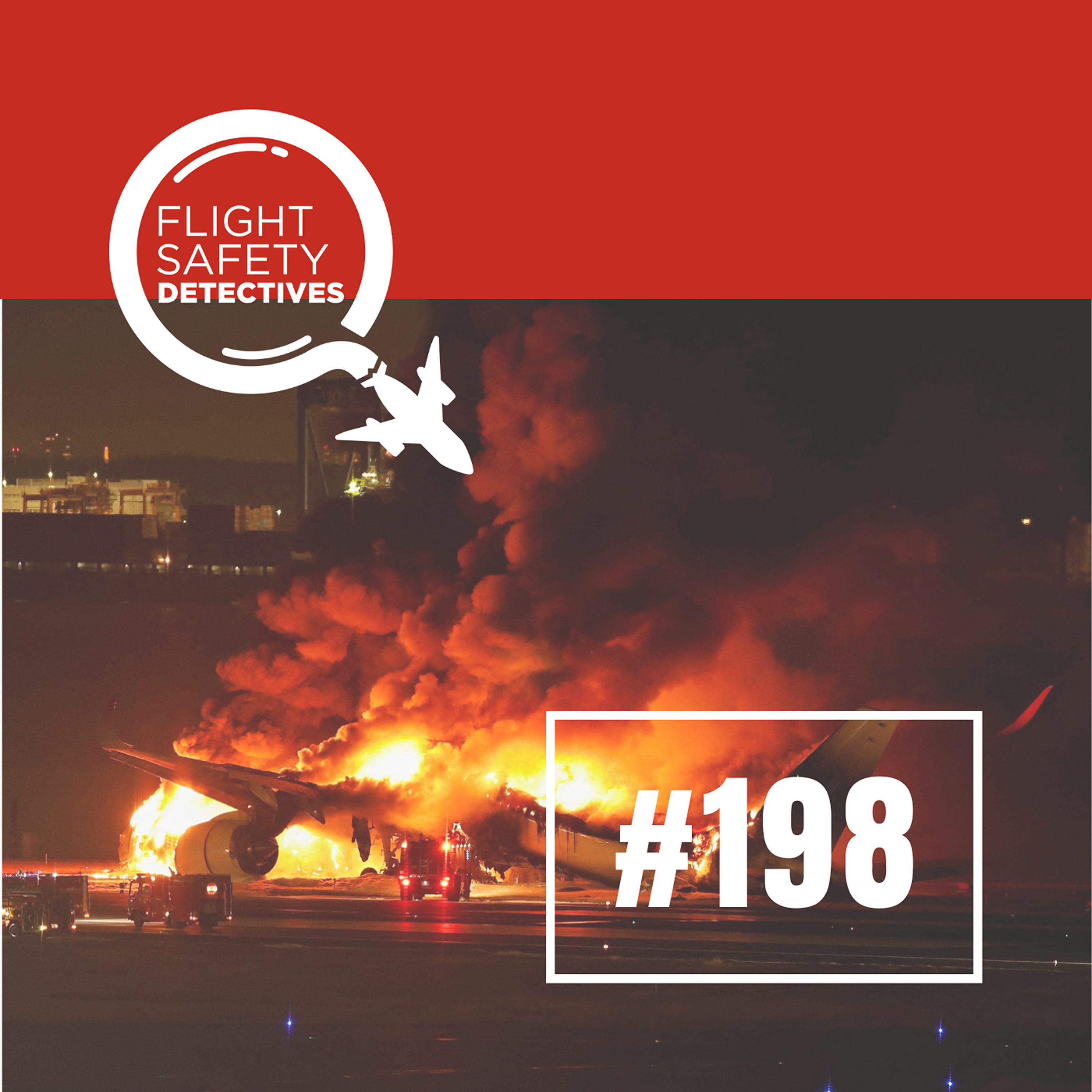

Airport rescue and firefighting expert Jack Kreckie and the Flight Safety Detectives discuss the January 2, 2024 runway collision between a Japan Airlines A350 and a Japan Coast Guard Dash 8 in Tokyo. Kreckie shares his inside knowledge of aircraft firefighting techniques and the systems in place to save lives and manage fires. He shares how modern composite materials used on aircraft impact the job of firefighters. This event is compared with other notable accidents, including the ground collision between a USAir 737 and a Fairchild Metroliner in Los Angeles in 1991 and the crash of an Asiana 777 in San Francisco in 2013. Hear about the training and safety systems in place that aided firefighters and the flight crew and likely were key factors in the safe evacuation of the aircraft. See images and related documents at the Flight Safety Detectives website. https://flightsafetydetectives.com/
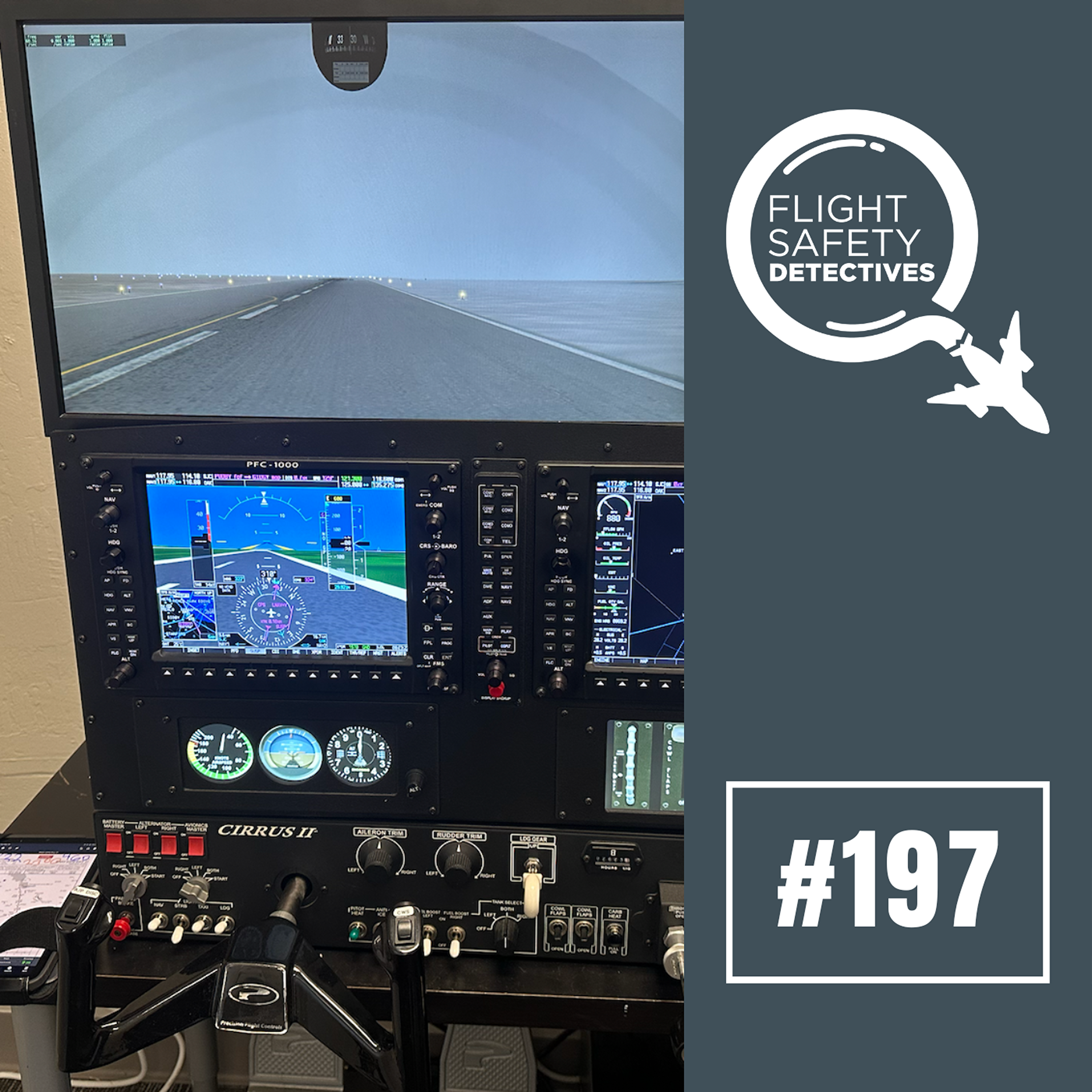

Todd Curtis and John Goglia analyze an accident that was investigated by the Australian Transportation Safety Bureau, Australia's version of the NTSB. The ATSB report offers comprehensive aviation safety details and insight. John and Todd review the level of detail and compare it to what they find in NTSB reports from similar general aviation accidents. The Australian accident involved a Cessna 172 aircraft that crashed due to pilot decision making. This was the pilot’s first solo flight using the autopilot system. His confusion led to the fatal plane crash. John compares the pilot’s decisions in the Australian accident with those of the pilots in the 2000 crash of Alaska Airlines Flight 261. In that aviation disaster, the crew decided to keep flying rather than make a precautionary landing. Todd discusses the steps he takes to avoid making autopilot-related errors in flight. He uses both a laptop-based flight simulator at home and a more sophisticated fixed based simulator to complement his flight training. Related documents are available at the Flight Safety Detectives website. Don’t miss what’s to come from the Flight Safety Detectives - subscribe to the Flight Safety Detectives YouTube channel https://www.youtube.com/c/FlightSafetyDetectives, listen at your favorite podcast service and visit the Flight Safety Detectives website https://flightsafetydetectives.com/.
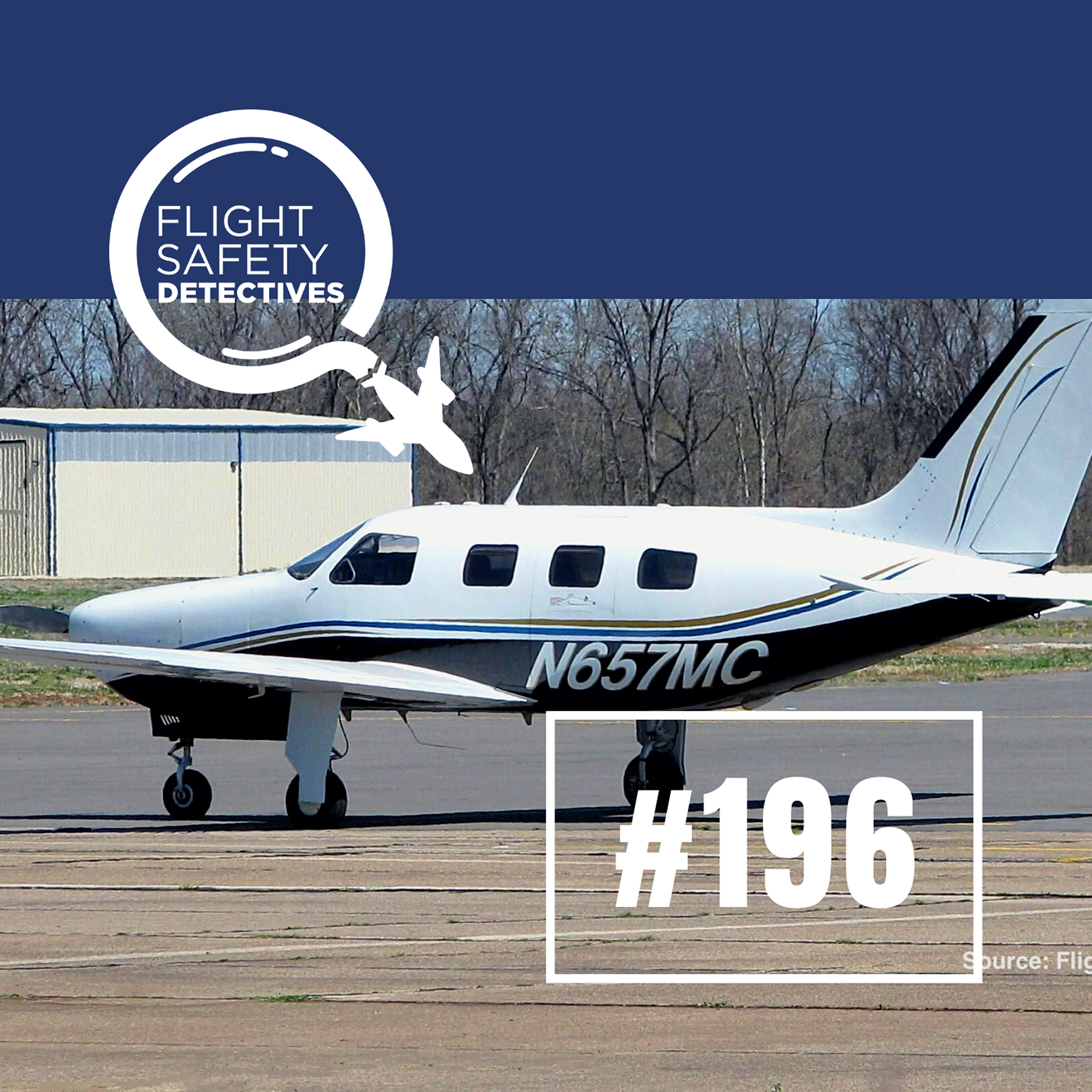

Greg Feith and John Goglia review recent general aviation safety issues. Lack of operation discipline is leading to avoidable plane damage insurance claims. Because the claims increase insurance rates, all general aviation pilots are paying a price. Multiple incidents are shared as examples: planes running over taxi lights, ground collisions with aircraft and other objects, engines started with tow bars attached. John and Greg see a lack operational discipline by general aviation and professional pilots as a root cause of these avoidable incidents. The issues are not limited to smaller general aviation aircraft. John mentions 2014 fatal accident involving a Gulfstream aircraft where the aircraft operator exhibited operational discipline issues. John and Greg also use as an example the Piaggio elevator separation event mentioned in Episode 196. Aviation safety depends on pilots having a high level of operational discipline at all times when the plane is moving. Don’t miss what’s to come from the Flight Safety Detectives - subscribe to the Flight Safety Detectives YouTube channel https://www.youtube.com/c/FlightSafetyDetectives, listen at your favorite podcast service and visit the Flight Safety Detectives website https://flightsafetydetectives.com/.
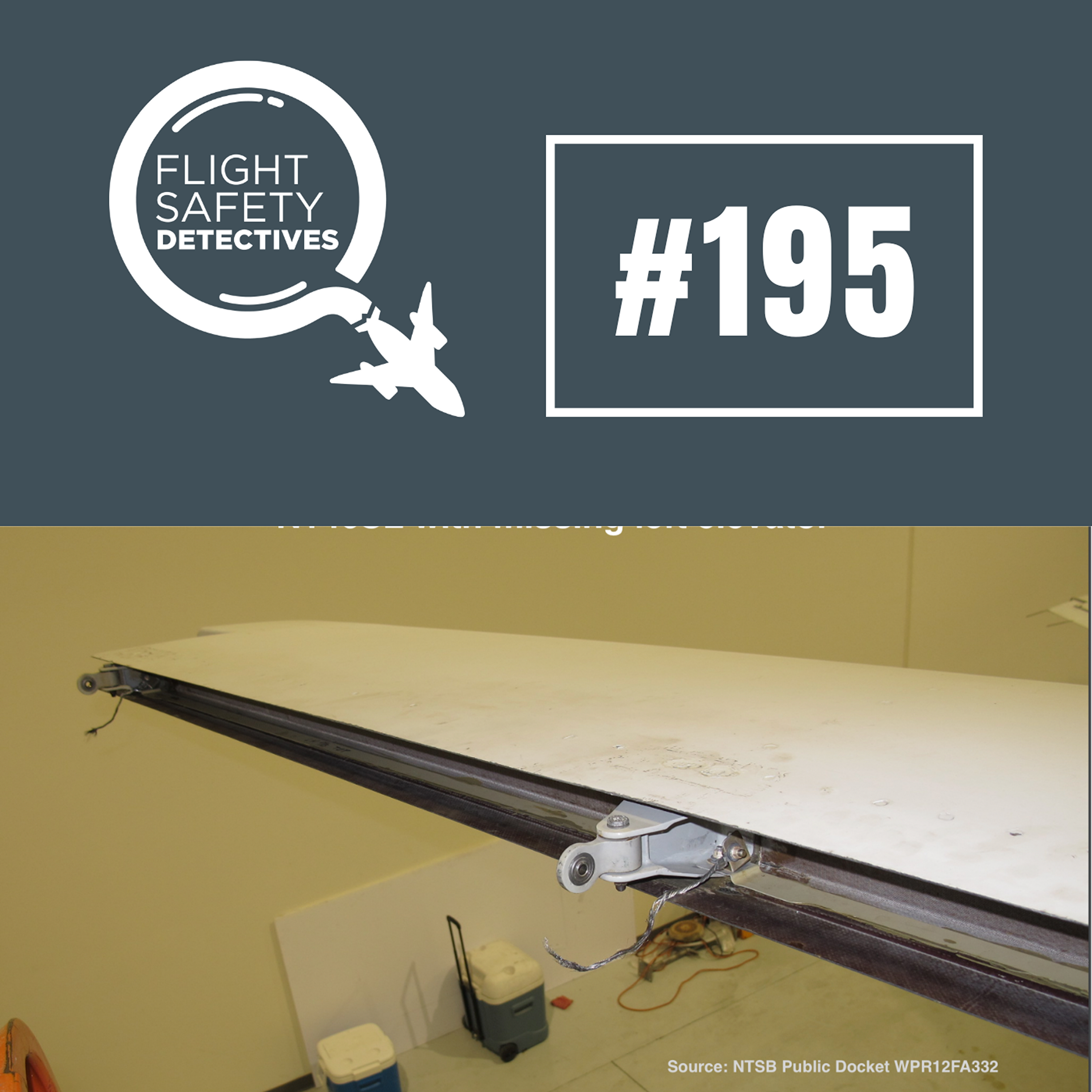

Pilot and maintenance failures combined to create a dramatic turboprop incident that became a criminal case. John Goglia and Greg Feith explore the incident with a Piaggio aircraft that lost an elevator on the first flight of the day and continued with operations. The air taxi flight crew landed and flew to next airport without performing a preflight inspection. John and Greg talk about the indications the pilots could have detected to recognize problems even if they could not visually inspect the elevators. John cites the NTSB investigation of the 2000 crash of an Emery Worldwide Airlines DC-8 as an example of how a pilot may be able to feel the difference in the control response when a flight control surface fails. The investigation found that maintenance done in response to mandatory AD 28 days before this incident had not been done properly. The nuts holding the elevators in pace were not torqued properly. The plane flew 128 hours with loose hardware. Adding to this incident, the head of maintenance of the charter company operating the plane took steps to hide evidence from the NTSB and FAA. A criminal investigation led to a fine that put the company out of business and a conviction for the head of maintenance. Related documents are available at the Flight Safety Detectives website. Don’t miss what’s to come from the Flight Safety Detectives - subscribe to the Flight Safety Detectives YouTube channel https://www.youtube.com/c/FlightSafetyDetectives, listen at your favorite podcast service and visit the Flight Safety Detectives website https://flightsafetydetectives.com/.
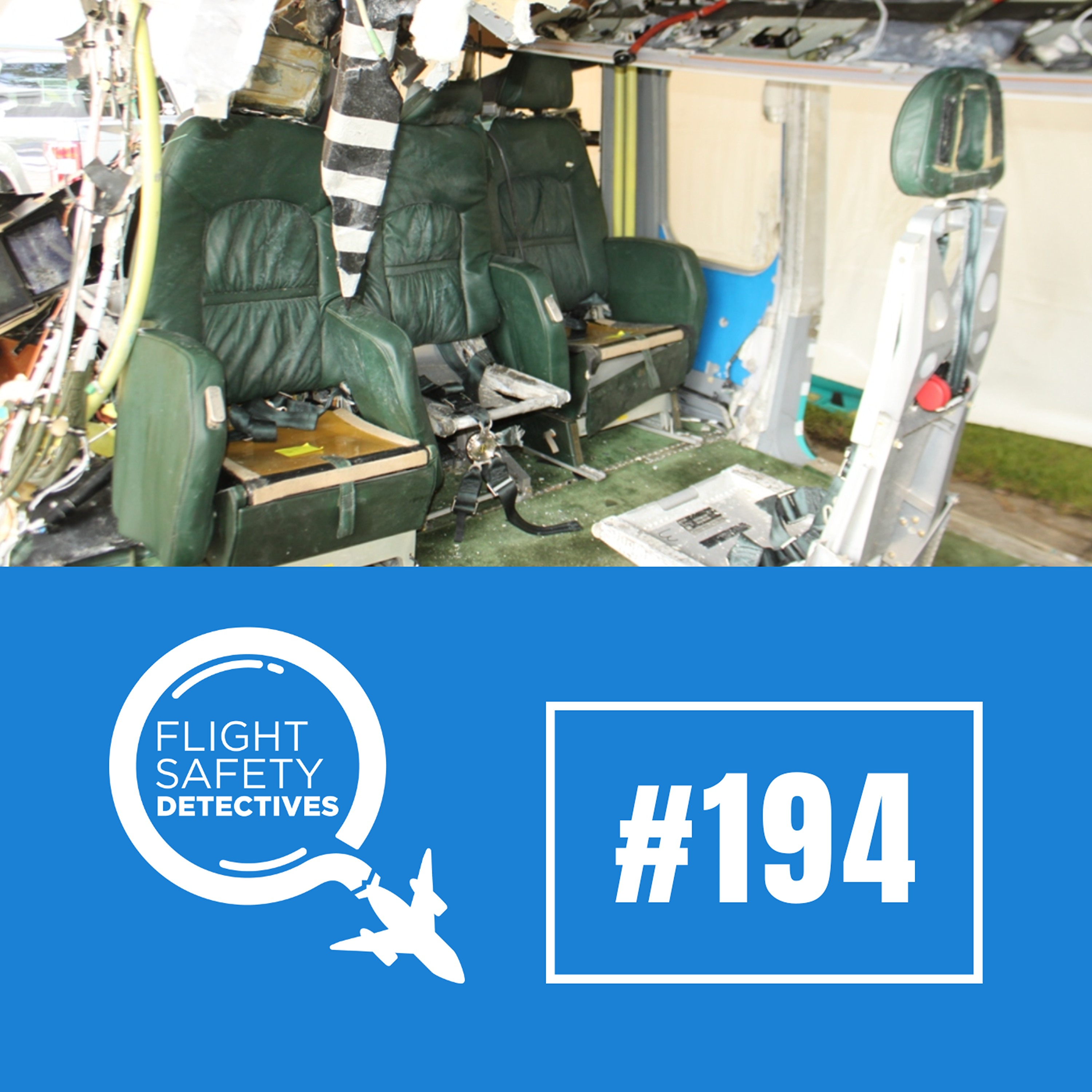

More money than brains? Todd, Greg, and John examine a fatal Bahamas helicopter crash where the pilots’ focus on what their billionaire boss wanted overrode operational discipline. The 2019 Agusta AW139 helicopter crash at sea killed both pilots and all five passengers. While the crew had flown the route on at least 10 previous occasions, this was their first night flight. Greg, Todd, and John raise many issues beyond the probable causes listed in the NTSB report: · Inadequate flight planning · Lack of a formal safety management system in the company that operated the helicopter · The long duty day of the flight crew “There were no mechanical issues. This is all about a lack of planning and poor decision making by the pilots,” John says. The helicopter CVR does not indicate that the pilots did any of the proper checks for IFR at night. They also were not monitoring their gauges, and seemed to misread the instruments. Fatigue may have been a factor, since the pilots were awakened to make the 2AM flight. John ends the show by encouraging pilots and aircraft operators to use flight risk assessment tools (FRAT) from the FAA and the NBAA to help prevent accidents. Related documents are available at the Flight Safety Detectives website. Don’t miss what’s to come from the Flight Safety Detectives - subscribe to the Flight Safety Detectives YouTube channel https://www.youtube.com/c/FlightSafetyDetectives, listen at your favorite podcast service and visit the Flight Safety Detectives website https://flightsafetydetectives.com/.
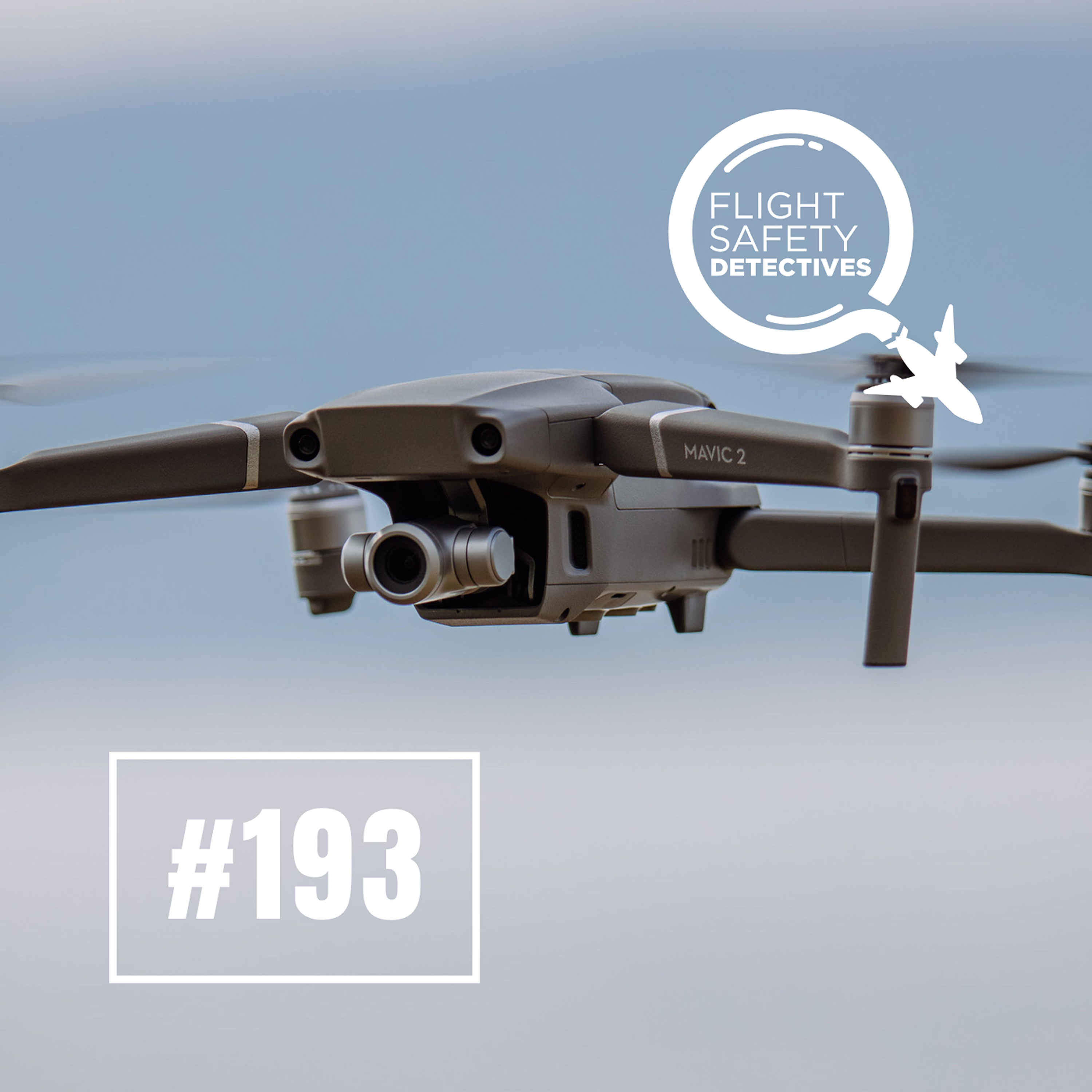

A drone and helicopter collide in midair as they cover a desert road race. The crash caused minor damage to the helicopter and major damage to the drone. Todd Curtis and John Goglia dissect the video and NTSB report of the incident involving a Aerospatiale AS350BA helicopter and a DJI Mavic 2 Zoom drone. John and Todd focus on key safety issues that the NTSB did not raise as they examined the 2020 collision in Johnson Valley, California. Operating helicopters and drones in the same low altitude airspace created significant safety risks that neither pilot appeared to take into account. A video from the drone documents the midair collision. John and Todd share expert analysis of the safety issues revealed in the video. They find that both pilots made hazardous moves that were outside regulations. Related documents are available at the Flight Safety Detectives website. Don’t miss what’s to come from the Flight Safety Detectives - subscribe to the Flight Safety Detectives YouTube channel https://www.youtube.com/c/FlightSafetyDetectives, listen at your favorite podcast service and visit the Flight Safety Detectives website https://flightsafetydetectives.com/.
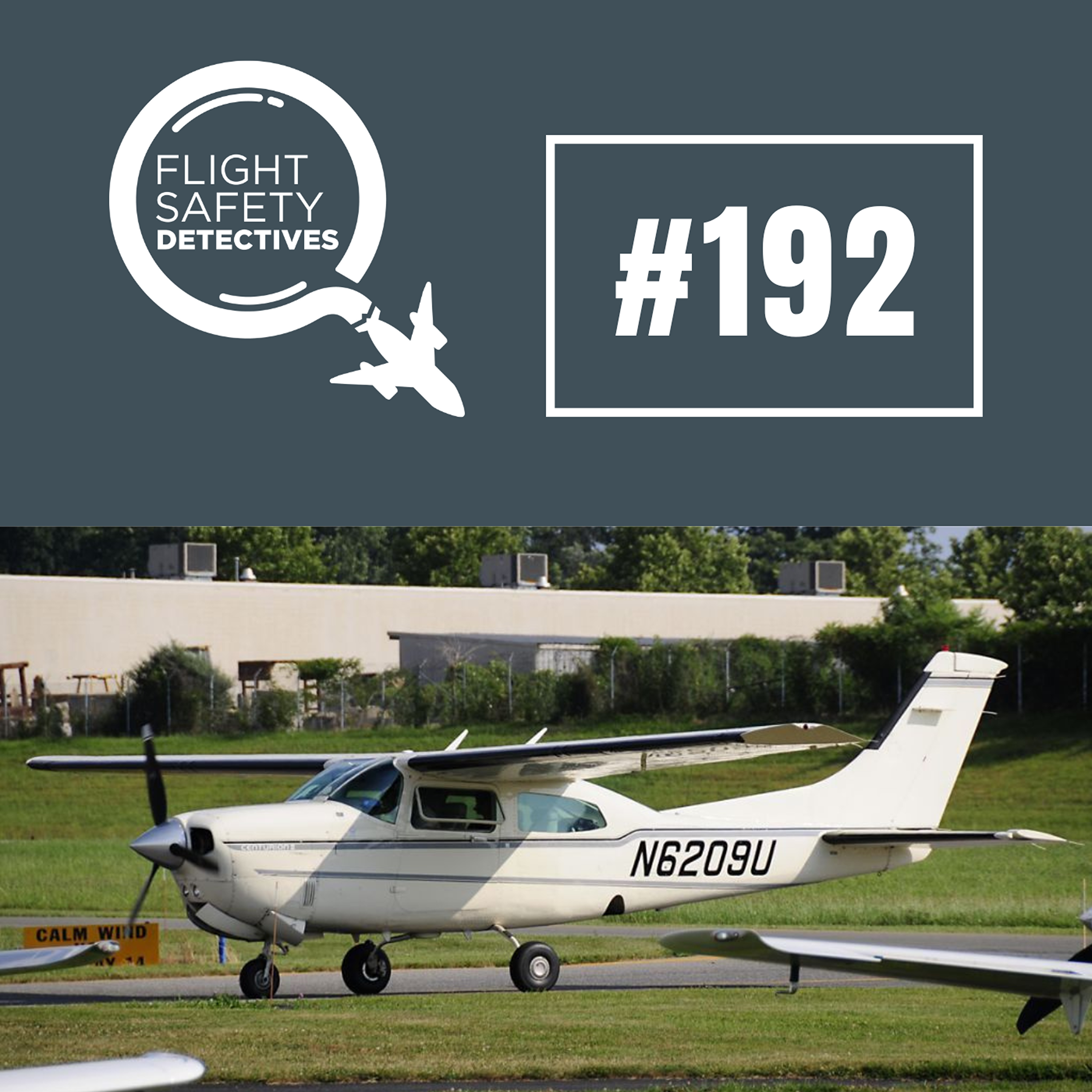

Oil leaks don’t just happen. When they do, they should trigger a close look at the engine. John Goglia and Todd Curtis share this advice after digging into the fatal crash of a Cessna Centurion after the owner and his passenger made unscheduled repairs on the oil system. The experienced pilot and passenger lost oil in fight and landed to add more. Surprisingly, there is no evidence that they did any kind of inspection of the engine. Witnesses present when they took off again say they did not do an engine runup. They also reported hearing odd engine noises as the plane took off. Todd and John discuss how the decisions made by the pilot were the primary cause of this plane crash. Secondary to that was the in-flight engine failure experienced shortly after takeoff. Related documents are available at the Flight Safety Detectives website. Don’t miss what’s to come from the Flight Safety Detectives - subscribe to the Flight Safety Detectives YouTube channel https://www.youtube.com/c/FlightSafetyDetectives, listen at your favorite podcast service and visit the Flight Safety Detectives website https://flightsafetydetectives.com/.
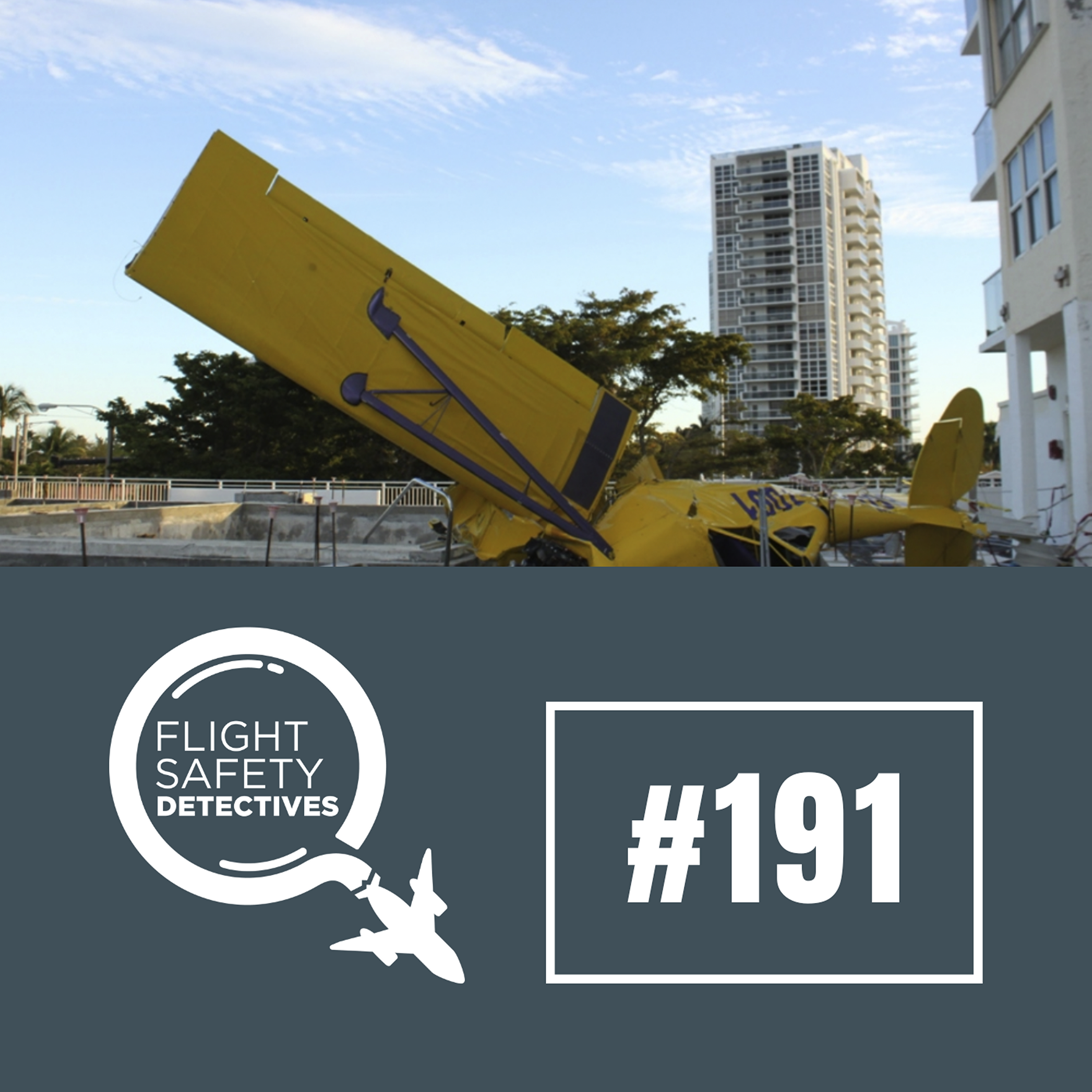

A pilot doing his first banner tow with a Piper PA25 crashed and died. Todd and John examine this devastating banner tow plane crash. They urge pilots to educate themselves about all types of flight operations. NTSB reports are a good resource, but more data is often available online. Images and videos taken by other pilots and the public and websites like FlightAware can help the effort to understand what is needed for aviation safety in all types of flight operations. The 2019 plane crash in Fort Lauderdale, Florida at the center of the episode happened to a new tow pilot who had less than an hour's worth of flight time towing a banner. Inexperience and a lack of training led to this aviation disaster. Banner towing has long been an attractive job for pilots looking to build flight hours. Unfortunately, accidents are common in towing operations. Todd and John offer options for new pilots to increase their understanding of the risks that come with banner towing and other types of commercial flight operation. Related documents are available at the Flight Safety Detectives website. Don’t miss what’s to come from the Flight Safety Detectives - subscribe to the Flight Safety Detectives YouTube channel https://www.youtube.com/c/FlightSafetyDetectives, listen at your favorite podcast service and visit the Flight Safety Detectives website https://flightsafetydetectives.com/.
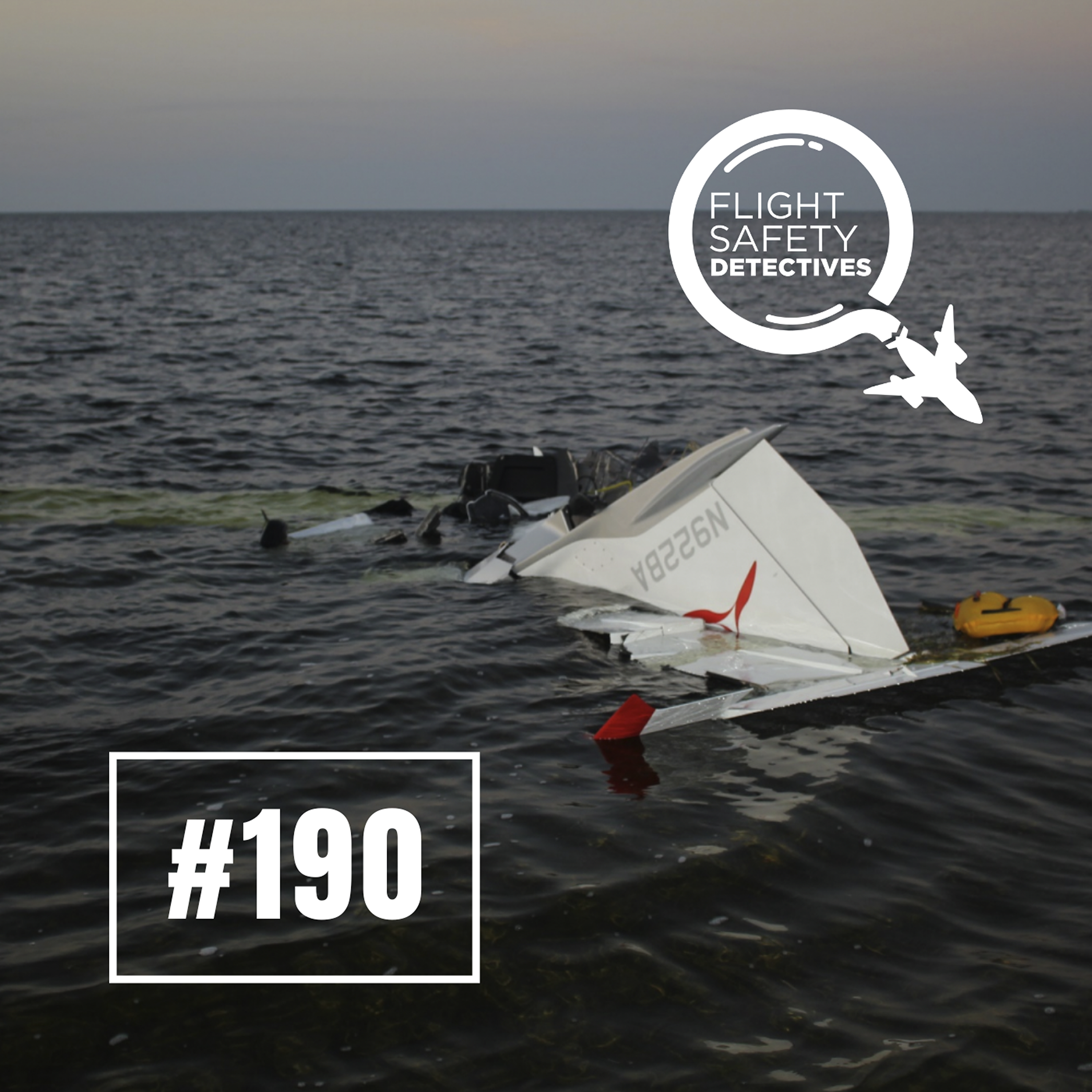

A former major league pitcher who had a Hall of Fame career died when doing stunt-type maneuvers in his plane. Todd Curtis and John Goglia discuss Roy "Doc" Halladay’s risk-taking behavior that led to the November 2017 crash of the Icon A5 light sport aircraft he was piloting. The plane crash occurred when Halladay was executing aggressive maneuvers at low altitudes over the waters near Clearwater, Florida. The NTSB investigation showed that Halladay had drugs in his system that would have likely impaired his decision-making ability. John sums up Halladay’s actions as “absolutely crazy.” Todd notes that the bad decision making started long before he got into the cockpit that day. Pilots, mechanics, and others in the aviation community have a responsibility to act when others are making decisions or taking actions that put themselves and others at risk in the air. These actions may save lives and avoid aviation disasters. Related documents are available at Don’t miss what’s to come from the Flight Safety Detectives - subscribe to the Flight Safety Detectives YouTube channel https://www.youtube.com/c/FlightSafetyDetectives, listen at your favorite podcast service and visit the Flight Safety Detectives website https://flightsafetydetectives.com/.
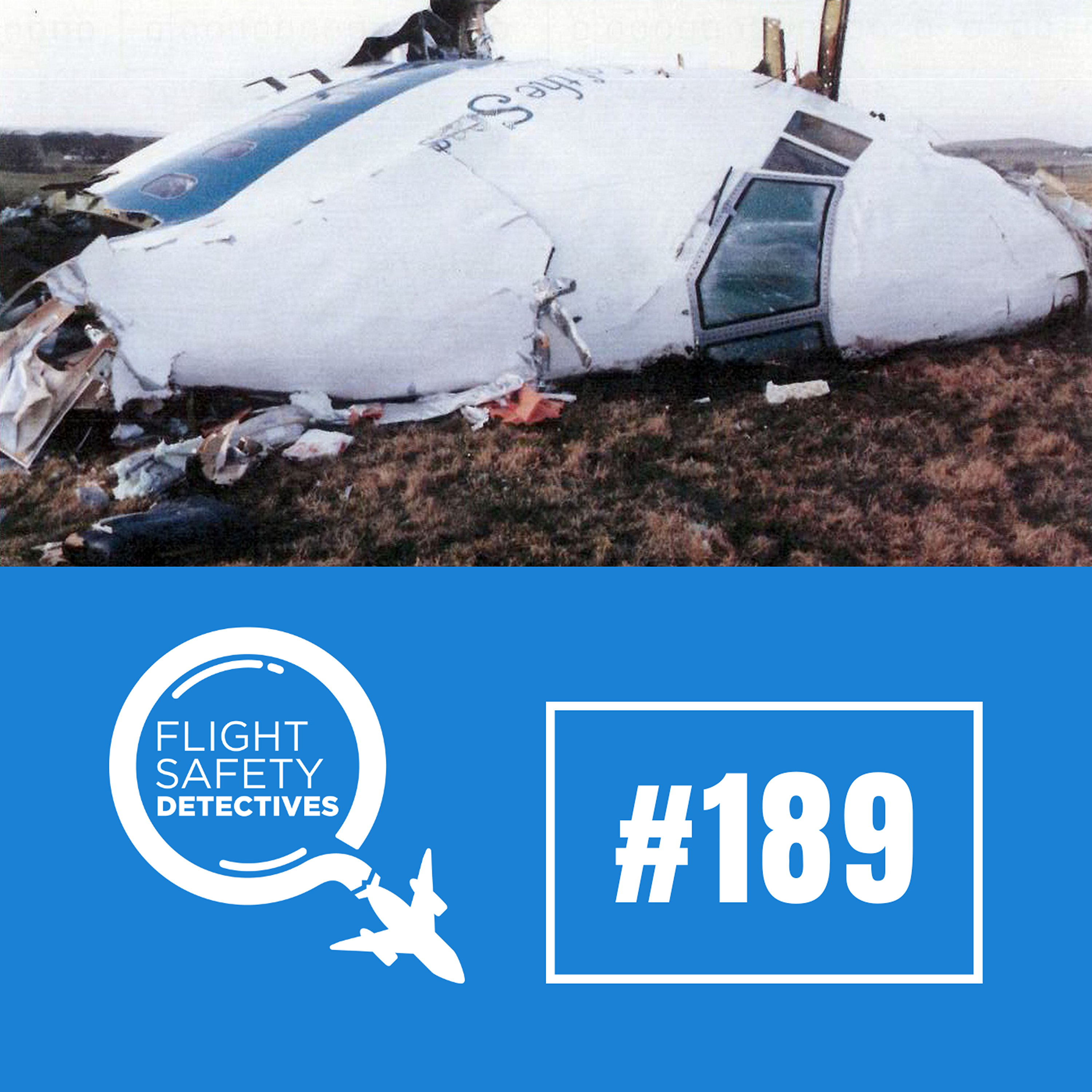

The recent event where an off-duty airline pilot who was flying in an airplane jump seat allegedly tried to shut off the engines leads to a discussion of crimes in the air. John and Todd talk about several examples of criminal aviation disasters. In the October 2023 event, a Horizon Air Embraer E175 airliner carrying dozens of passengers from Everett, Washington, to San Francisco was endangered. An off-duty Alaska Airlines pilot reported he had taken “magic mushrooms” 48 hours before the incident where he tried to disable the engines in flight. Todd and John compare this event to other events where pilots deliberately crashed aircraft. They contrast the U.S. policy of publishing official reports of criminal aviation events with the policies of other countries. They also discuss how practices and policies related to jump seat use have changed over time. Contributing to these disasters may be medical privacy laws. The pilot certification process now relies on self-reporting of medical issues. Since many conditions would disqualify an individual from flying, there is incentive to not report all issues. John argues that changes are needed that would both protect the flying public and the privacy and careers of pilots who may have medical issues. Related Documents are available at the Flight Safety Detectives website.


An experienced pilot and mechanic made risky decisions, causing a plane crash that killed himself and a passenger. Todd Curtis and John Goglia discuss the 2021 crash and the many decisions made that compromised aviation safety. The pilot was flying a recently purchased Piper PA24 Comanche that had been grounded for the previous 15 years. The accident pilot was an experienced and certified FAA mechanic. He had extensive experience flying Piper aircraft, but no significant experience flying the model of the accident aircraft. Todd and John question the decision-making process of the accident pilot. Although the engine was sputtering, he took off. Although he was an experienced mechanic, he apparently did not do a full inspection of the engine. He attempted the “impossible turn,” a u-turn back to the airport that almost always results in stalling the engine. John and Todd review the information in the NTSB report of the accident. They highlight the aviation safety practices that could have avoided this crash. Don’t miss what’s to come from the Flight Safety Detectives - subscribe to the Flight Safety Detectives YouTube channel https://www.youtube.com/c/FlightSafetyDetectives, listen at your favorite podcast service and visit the Flight Safety Detectives website https://flightsafetydetectives.com/.


Not too long ago, anyone who reported a UFO, or UAP as they are called today, was deemed crazy. The most likely follow up was a psychiatric exam. John Goglia and Todd Curtis report on the growing effort to systematically record and analyze these events. A September 2023 NASA report from an independent study team recommended that NASA use the Aviation Safety Reporting System (ASRS) to support U.S. government efforts to understand unidentified anomalous phenomena (UAP) and the effect on aviation safety. John and Todd offer detail on why the ASRS is an ideal tool for the job. “Something is going on,” John says. “It is time we get a handle on it.” John and Todd also review previous Flight Safety Detectives episodes that discuss UAP events and the U.S. government's evolving efforts to understand UAPs. Don’t miss what’s to come from the Flight Safety Detectives - subscribe to the Flight Safety Detectives YouTube channel https://www.youtube.com/c/FlightSafetyDetectives, listen at your favorite podcast service and visit the Flight Safety Detectives website https://flightsafetydetectives.com. Music: “Inspirational Sports” license ASLC-22B89B29-052322DDB8


Special guest former NTSB Board Member Richard Healing and Greg Feith and John Goglia cover the recent fatal crash involving Richard McSpadden. McSpadden was executive director of the AOPA Air Safety Institute and a true champion of aviation safety. “Richard contributed a lot to aviation safety, especially on the general aviation side,” Feith shares. The number of accidents involving flight instruction is sky high right now. Healy discusses his ongoing work in researching aviation safety issues involving training flights. Among the findings – an alarming number of accidents caused by flight instructor error. The discussion focuses on issues of operational discipline. From their days at the NTSB to current investigations, John, Greg and Dick have all found that neglecting the rules is a leading cause of flight issues. They make the case for some form of flight data recording in flight instruction aircraft. The investment could help instructors learn and provide better aviation safety data. Don’t miss what’s to come from the Flight Safety Detectives - subscribe to the Flight Safety Detectives YouTube channel https://www.youtube.com/c/FlightSafetyDetectives, listen at your favorite podcast service and visit the Flight Safety Detectives website https://flightsafetydetectives.com. Music: “Inspirational Sports” license ASLC-22B89B29-052322DDB8


People have seen unexplained objects in the skies for decades. The US Government and other entities are finally discussing these events publicly, an important development for aviation safety. “These events have an impact on flight crews and systems and are important to look at,” says Todd Curtis. Now falling under the classification, unidentified anomalous phenomena (UAP), these events have been cited by the US Government as impacting national security and public safety. Todd and John discuss how these events impact aviation safety. The episode looks at the July 2023 hearing in the US House of Representatives that included testimony from three military veterans who either witnessed or investigated UAP events. John and Todd share their perspectives on the aviation safety aspect of UAP issues, including the difficulty of understanding what may be behind these phenomena when there are few trustworthy sources of information. Related documents are available at flightsafetydetectives.com
